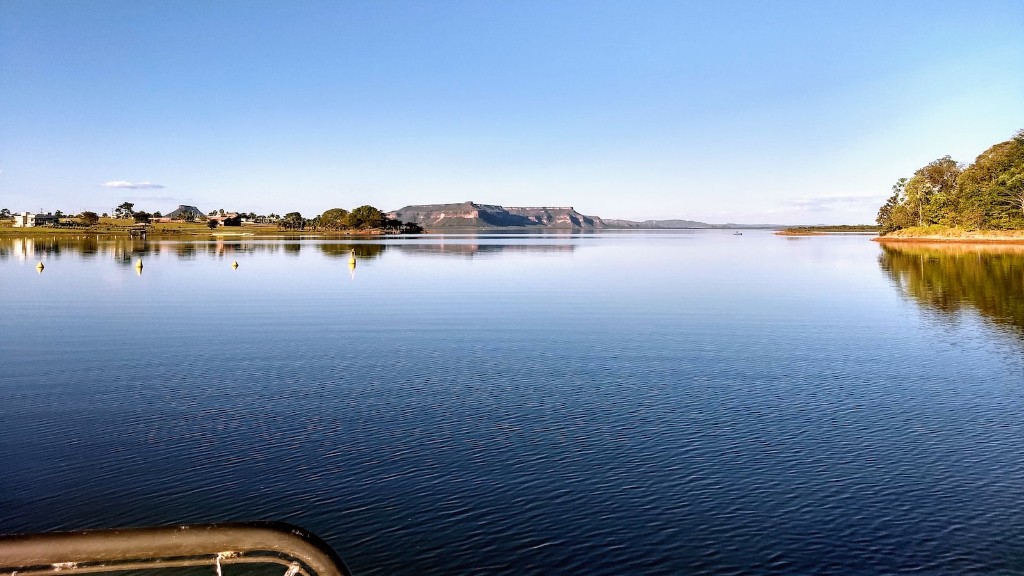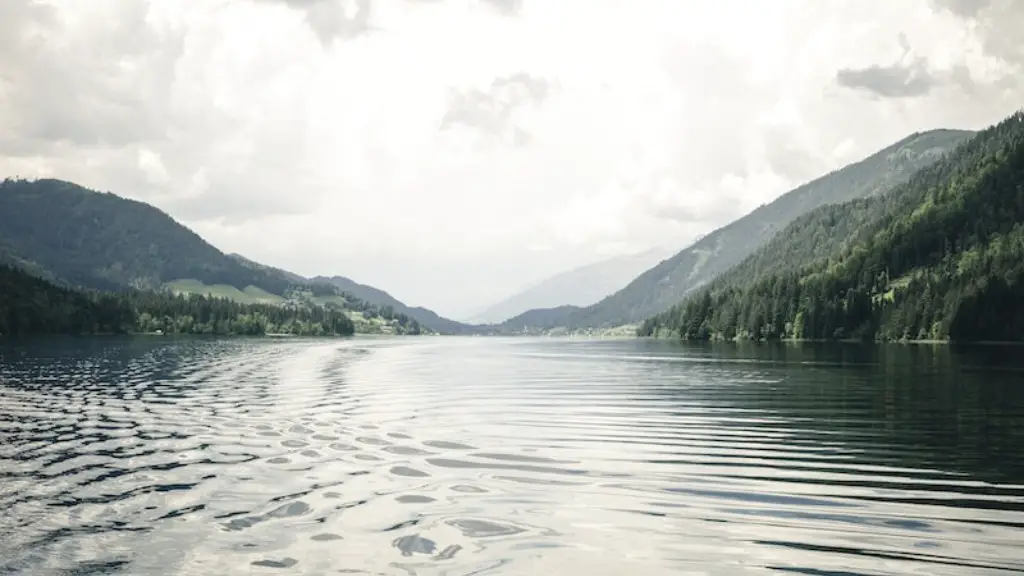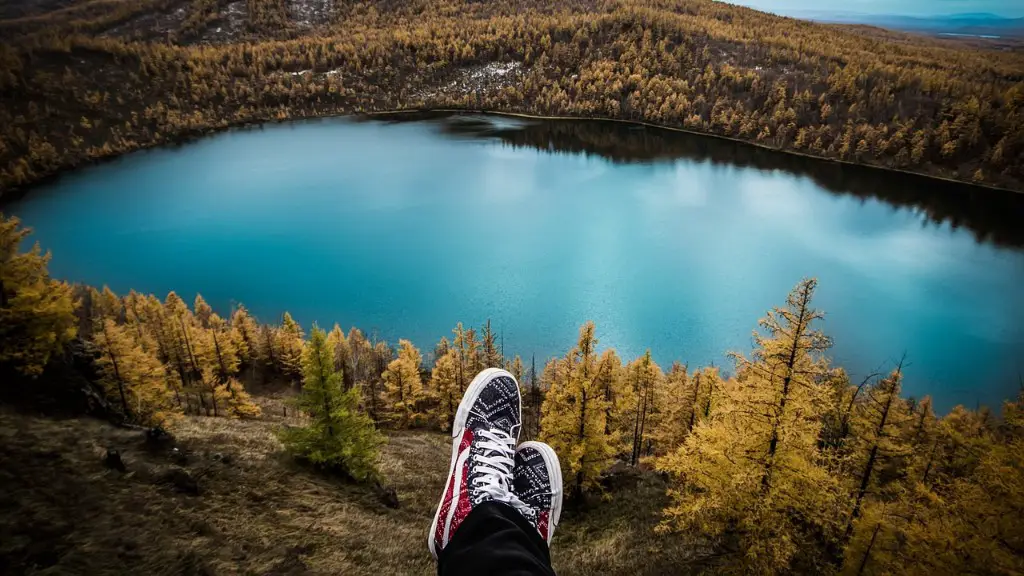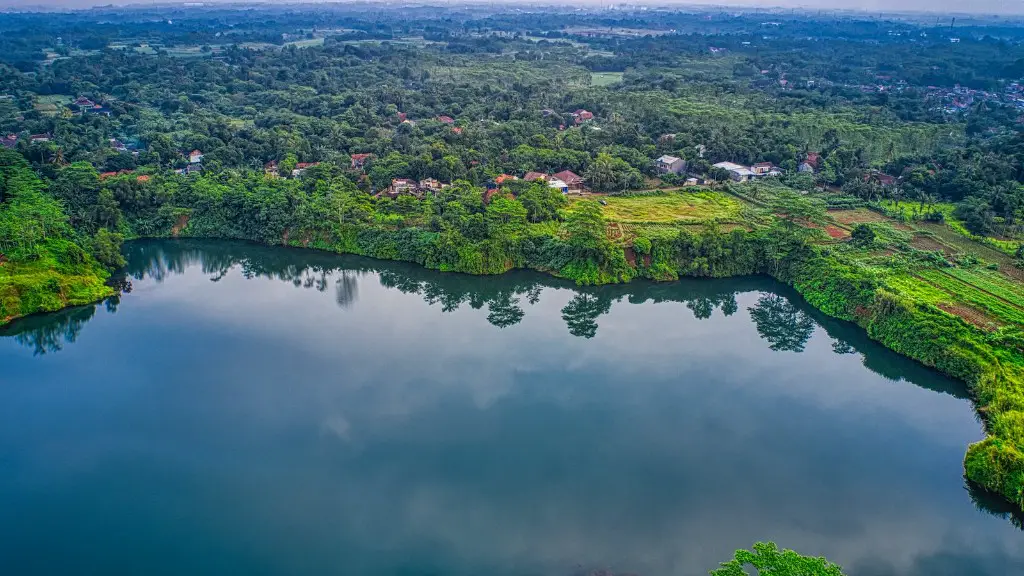Lake Michigan is an important part of not only the Great Lakes region but also the globe, supplying fresh water to the citizens of the United States, Canada and other regions. Though the Great Lakes are renowned for their depth and size, they are still susceptible to flooding. The query, “Can Lake Michigan flood”, is a valid one, with numerous aspects to take into consideration when answering.
When purchasing or maintaining property along the Great Lakes, research should obviously be conducted in relation to flooding. Much like rivers, events such as heavy rainfall, melting snow, and powerful storms can easily cause water levels in the Great Lakes to rise. If the Great Lakes Basin experiences a rise or significant fluctuations in water level for any reason, flooding may easily occur along the shoreline of Lake Michigan. In fact, the Illinois-Indiana Sea Grant program reports that the Great Lakes frequently reach their highest water levels in the springtime, which can result in flooding. This places a large burden on those with property along the Lakes’ shorelines.
According to Northwestern University, the National Oceanic and Atmospheric Administration (NOAA), watches over flooding of the Great Lakes, like Lake Michigan. The agency provides official forecasts of water levels at eight Great Lakes monitoring sites. This information is released twice a month, based on its own research, to alert those living near the Great Lakes of any potential flooding.
The U.S. Army Corps of Engineers plays an integral role in controlling flooding on the Great Lakes. The government campaign utilizes numerous levees and physical structures to keep the Lakes from overtopping the shorelines when levels rise significantly. The Corps of Engineers is also responsible for issuing surveys and flood-fighting plans focused on the Great Lakes. The knowledge gleaned from these is then used as a reference for local governments when drafting plans to prevent or assist with flooding.
For citizens with dwellings located around Lake Michigan, it is of utmost importance to obtain the facts regarding your specific location beforehand. One should be aware of any safety plans or ordinances that their respective community or local government may have implemented for when flooding does occur. In the event that one’s location is lying in an area where flooding is likely, an individual should consider strengthening property and beginning flood-proofing projects.
Residents of the Great Lakes must also be aware of the potential health issues that come with flooding. If a home is situated in an area prone to flooding, it is definitely better to ensure the bathing and drinking water are clean. Water contamination is commonplace after any flooding event, even if a particular region’s water is usually safe.
Federal Assistance With Flooding and Lake Michigan
The federal government provides assistance with flooding and other natural disasters that can occur around the Great Lakes, including Lake Michigan. This help may come in the form of financial aid, temporary or permanent housing, or other necessary resources. Additionally, the federal government sponsors programs to help communities become more resilient to handle and manage flooding, such as Local Hazard Mitigation Plans. These plans address local flooding and related natural disasters, as well as provide information about supplies and equipment to help in the event of an emergency. The Department of Homeland Security’s Federal Emergency Management Agency (FEMA) provides grant programs to help cover costs related to asbestos, air quality and stormwater management, among others.
The federal government also offers hazard prevention tactics during a flooding event. During floods, the government may issue warnings of potential disasters, admonishing citizens to take precautions. The Department of Commerce’s National Oceanic and Atmospheric Administration also issues watches and warnings in the event of a hazardous weather event.
There are many prevention methods that can be taken before and during a flood to minimize damages. One should consider stockpiling supplies such as sandbags, pumps, and plastic sheeting to divert water away during a potential flood. Working with a home insurance provider with specific expertise in the area is advisable if a resident believes their region is very prone to flooding. This can prove to be an invaluable asset, as insurance offers financial aid should an individual experience damages from flooding.
Local Emergency Response and Flooding
Local emergency responders come into play during a flooding event. In the event of flooding, 911 can be contacted to request any necessary assistance. Responsible for the safety of citizens, emergency responders are present to ensure Lake Michigan flooding is properly managed. This often includes providing evacuation orders, guiding residents to safety, and also engaging in search and rescue if needed.
Local and state agencies also play an important role in monitoring flooding on Lake Michigan. An example is the Illinois State Geological Survey program, which regularly records lake levels and provides data to those in affected areas. This information is then used to develop large-scale mitigation plans for when flooding does occur. Reports may include records of flooding magnitude and associated economic losses, allowing for these areas to take the proper steps to help lower any losses.
The Illinois Department of Natural Resources works in association with the U.S. Geological Survey to determine relevant flooding information. The agency also publishes weekly Lake Michigan shoreline condition forecasts, which are used to help mitigate potential problems. This data is made accessible through the state’s webpage and disseminates numerous facts regarding expected flooding.
Possible Solutions to Flooding Around Lake Michigan
The challenge to reduce flooding on Lake Michigan is a difficult issue to tackle and can be met with a variety of solutions. Techniques such as coastal restoration, as well as building and maintaining dams and levees, are some commonly recommended strategies. Additionally, methods such as living shoreline projects — which use aquatic vegetation, wetland habitats and rock structures to help hold shorelines in place — may be considered.
Other prospective steps for Flood Reduction include increasing public awareness about flooding’s dangers, as well as formulating educational campaigns. There may be other environmental techniques, such as planting trees, to help create a more effective drainage network. Taking precautionary measures and studying natural hazards can prove to be a highly beneficial effort, as flooding-related information is made available.
Climate change studies and research also play a pertinent role in helping to prevent future flooding events around Lake Michigan. Through detailed information about the water, climate, and weather in the region, experts can gain insights that offer potential solutions to flooding and other dangers.
Environmental Factors of Flooding Around Lake Michigan
Environmental factors can largely influence the amount of flooding at Lake Michigan, with many sources of potential damage. A range of problems, from rising temperatures to severe storms, can contribute to a potential Lake Michigan flooding event. The modern age also has its associated perils, as runoff from cities can find its way into the Great Lakes, along with other man-made pollutants. The same can be said for coastal erosion, which can undermine secure shorelines and increase the risk of flooding.
The process of sedimentation due to the presence of excessive soil and sediment runoff is highly detrimental to the health of the Great Lakes region. As soil moves from its source, it can create a multitude of issues. Lakes, streams and rivers suffer from an increase of sediment as, over time, this soil can block channels and flow patterns, resulting in consequential flooding.
Other migratory wildlife can impose risk, as well. As certain species of fish or birds traverse the areas surrounding Lake Michigan, oftentimes, debris and other waste can enter the water and impede the natural flow of the lake. This disruption can cause the water levels to rise, causing a destructive flooding event.
Erosion Control & Lake Michigan Flooding Prevention
Erosion control should be a priority when living along the Great Lakes. Many organizations recommend using natural methods of erosion control, such as vegetation and aquascaping. These methods can assist in preventing potential flooding events by protecting the shorelines. Other sound strategies may also include stones, riprap, and strip buffers.
Dredging can also be a beneficial tool, as any sand or sediment that has collected along the shoreline must be removed. This is especially important for low-lying areas, which are the most at risk of flooding. Dredging can clear way for any excess water, allowing for the flow of the lake to become regulated.
Finally, investing in a good quality sea wall is also recommended for those living by Lake Michigan or another of the Great Lakes. This engineering effort can prove successful in protecting property from flooding and erosion from occurring.
Conclusion: Can Lake Michigan Flood?
Whether or not Lake Michigan can flood is largely dependent on a number of factors, including environmental and weather conditions. Research should be conducted in order to gain the facts one needs when living along the lake, such as the lake’s level of depth, shoreline habitat, and general geography. This can help tremendously when attempting to prevent or mitigate the effects of flooding on the lake. When living by the Great Lakes, there will always be the potential for flooding, which is why it is important to be aware of the risk and be prepared in the event of a disaster.





